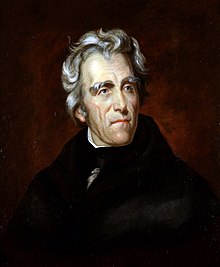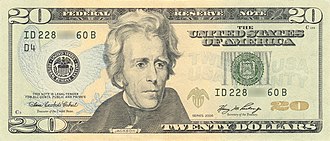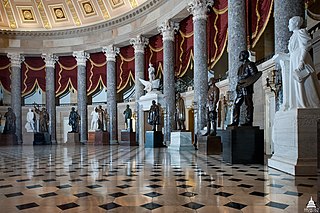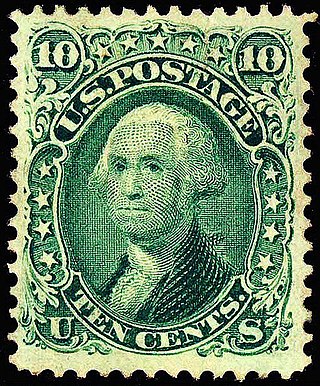
This is a list memorials to Andrew Jackson, the 7th president of the United States.

This is a list memorials to Andrew Jackson, the 7th president of the United States.


Jackson has appeared on U.S. banknotes as far back as 1869, and extending into the 21st century. His image has appeared on the $5, $10, $20, and $10,000 note. Most recently, his image has appeared on the U.S. $20 Federal reserve note beginning in 1928. [11] In 2016, Treasury Secretary Jack Lew announced his goal that by 2020 an image of Harriet Tubman would replace Jackson's depiction on the front side of the $20 banknote, and that an image of Jackson would be placed on the reverse side, though the final decision will be made by his successors. [12]
Jackson has appeared on several postage stamps. He first appeared on an 1863 two-cent stamp, which is commonly referred to by collectors as the Black Jack
Andrew Jackson is one of the few American presidents to appear on U.S. Postage more than the usual two or three times, appearing on at least twelve different issues as of 2023. The U.S. Post Office released a postage stamp in his honor 18 years after his death, with the issue of 1863, a 2-cent black issue, commonly referred to by collectors as the 'Black Jack'. [13] due to the large portraiture of Jackson on its face printed in pitch black. [14] During the American Civil War, the Confederate government issued two Confederate postage stamps bearing Jackson's portrait. [15] [lower-alpha 1]

The current flag of Jacksonville, adopted by the Jacksonville City Council on 24 February 1976, has a silhouette of Jackson on horseback. [16]
Jackson and his wife Rachel were the main subjects of a 1951 historical novel by Irving Stone, The President's Lady, which told the story of their lives up until Rachel's death. The novel was the basis for the 1953 film of the same name starring Charlton Heston as Jackson and Susan Hayward as Rachel. [17] [18]
Jackson has been a supporting character in a number of historical films and television productions. Lionel Barrymore played Jackson in The Gorgeous Hussy (1936), a fictionalized biography of Peggy Eaton starring Joan Crawford. [19] The Buccaneer (1938), depicting the Battle of New Orleans, included Hugh Sothern as Jackson, [20] and was remade in 1958 with Heston again playing Jackson. [21] Brian Donlevy played Jackson in the Paramount Pictures 1942 film The Remarkable Andrew . Basil Ruysdael played Jackson in Walt Disney's 1955 Davy Crockett TV miniseries. [22]
Jackson is the protagonist of the comedic historic rock musical Bloody Bloody Andrew Jackson (2008) with music and lyrics by Michael Friedman and book by Alex Timbers. [23]

Andrew Jackson was an American lawyer, planter, general, and statesman who served as the seventh president of the United States from 1829 to 1837. Before his presidency, he gained fame as a general in the U.S. Army and served in both houses of the U.S. Congress. Often praised as an advocate for ordinary Americans and for his work in preserving the union of states, Jackson has also been criticized for his racial policies, particularly his treatment of Native Americans.

Tallahassee is the capital city of the U.S. state of Florida. It is the county seat and only incorporated municipality in Leon County. Tallahassee became the capital of Florida, then the Florida Territory, in 1824. In 2022, the estimated population was 201,731, making it the eighth-most populous city in the state of Florida. It is the principal city of the Tallahassee, Florida Metropolitan Statistical Area, which itself had an estimated population of 390,992 as of 2022. Tallahassee is the largest city in the Florida Big Bend and Florida Panhandle region, and the main center for trade and agriculture in the Florida Big Bend and Southwest Georgia regions.

David Glasgow Farragut was a flag officer of the United States Navy during the American Civil War. He was the first rear admiral, vice admiral, and admiral in the United States Navy. He is remembered for his order at the Battle of Mobile Bay, usually paraphrased as "Damn the torpedoes, full speed ahead" in U.S. Navy tradition.

The National Statuary Hall is a chamber in the United States Capitol devoted to sculptures of prominent Americans. The hall, also known as the Old Hall of the House, is a large, two-story, semicircular room with a second story gallery along the curved perimeter. It is located immediately south of the Rotunda. The meeting place of the U.S. House of Representatives for nearly 50 years (1807–1857), after a few years of disuse it was repurposed as a statuary hall in 1864; this is when the National Statuary Hall Collection was established. By 1933, the collection had outgrown this single room, and a number of statues are placed elsewhere within the Capitol.

The postage stamps and postal system of the Confederate States of America carried the mail of the Confederacy for a brief period in U.S. history. Early in 1861 when South Carolina no longer considered itself part of the Union and demanded that the U.S. Army abandon Fort Sumter, plans for a Confederate postal system were already underway. Indeed, the Confederate Post Office was established on February 21, 1861; and it was not until April 12 that the American Civil War officially began, when the Confederate Army fired upon U.S. soldiers who had refused to abandon the fort. However, the United States Post Office Department continued to handle the mail of the seceded states as usual during the first weeks of the war. It was not until June 1 that the Confederate Post Office took over collection and delivery, now faced with the task of providing postage stamps and mail services for its citizens.

General Edmund Kirby Smith was a senior officer of the Confederate States Army who commanded the Trans-Mississippi Department from 1863 to 1865. Before the American Civil War, Smith served as an officer of the United States Army.

The Tennessee State Capitol, located in Nashville, Tennessee, is the seat of government for the U.S. state of Tennessee. It serves as the home of both houses of the Tennessee General Assembly–the Tennessee House of Representatives and the Tennessee Senate–and also contains the governor's office. Designed by architect William Strickland (1788–1854) of Philadelphia and Nashville, it was built between 1845 and 1859 and is one of Nashville's most prominent examples of Greek Revival architecture. The building, one of 12 state capitols that does not have a dome, was added to the National Register of Historic Places in 1970 and named a National Historic Landmark in 1971. The tomb of James K. Polk, the 11th president of the United States, is on the capitol grounds.

Clark Mills was an American sculptor, best known for four versions of an equestrian statue of Andrew Jackson, located in Washington, D.C., with replicas in Nashville, Tennessee, Jacksonville, Florida, and New Orleans, Louisiana.
Confederate monuments and memorials in the United States include public displays and symbols of the Confederate States of America (CSA), Confederate leaders, or Confederate soldiers of the American Civil War. Many monuments and memorials have been or will be removed under great controversy. Part of the commemoration of the American Civil War, these symbols include monuments and statues, flags, holidays and other observances, and the names of schools, roads, parks, bridges, buildings, counties, cities, lakes, dams, military bases, and other public structures. In a December 2018 special report, Smithsonian Magazine stated, "over the past ten years, taxpayers have directed at least $40 million to Confederate monuments—statues, homes, parks, museums, libraries, and cemeteries—and to Confederate heritage organizations."

Presidents of the United States have frequently appeared on U.S. postage stamps since the mid-19th century. The United States Post Office Department released its first two postage stamps in 1847, featuring George Washington on one, and Benjamin Franklin on the other. The advent of presidents on postage stamps has been definitive to U.S. postage stamp design since the first issues were released and set the precedent that U.S. stamp designs would follow for many generations.

Andrew Jackson is a bronze equestrian statue by Clark Mills mounted on a white marble base in the center of Lafayette Square within President's Park in Washington, D.C., just to the north of the White House. Jackson is depicted dressed in military uniform, raising his hat with his right hand, while controlling the reins with his left hand as his horse rises on its rear legs.

The Commemoration of the American Civil War on postage stamps concerns both the actual stamps and covers used during the American Civil War, and the later postage celebrations. The latter include commemorative stamp issues devoted to the actual events and personalities of the war, as well as definitive issues depicting many noteworthy individuals who participated in the era's crucial developments.

Territories of the United States on stamps discusses commemorative postal issues devoted to lands that have been ceded to the nation or purchased by treaty in conjunction with both war and peace. Thirteen states have been created from colonial territories, two from independent republics, four from previous states in the Union, and an additional thirty-one from United States territories.

There are more than 160 monuments and memorials to the Confederate States of America and associated figures that have been removed from public spaces in the United States, all but five of which have been since 2015. Some have been removed by state and local governments; others have been torn down by protestors.